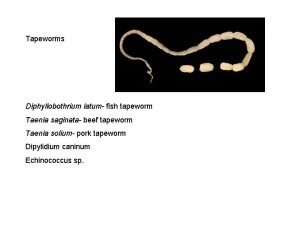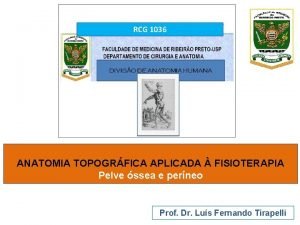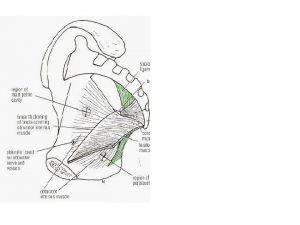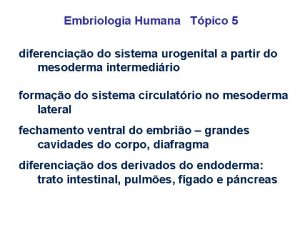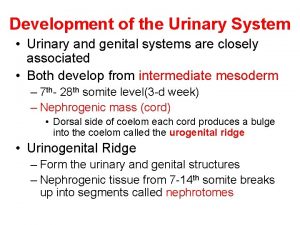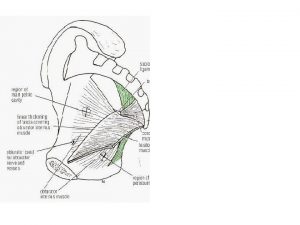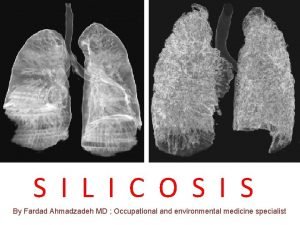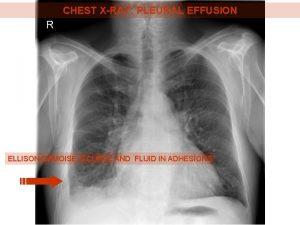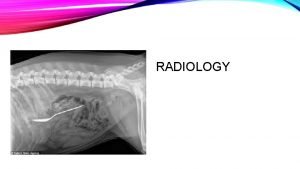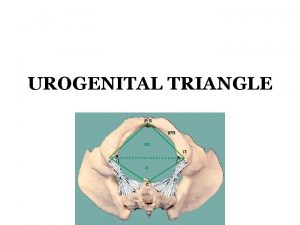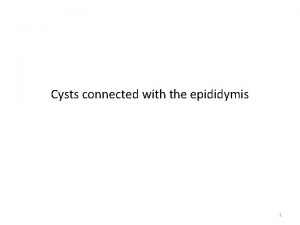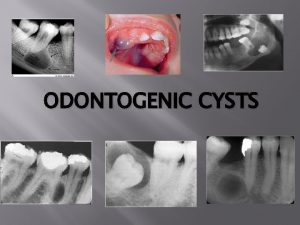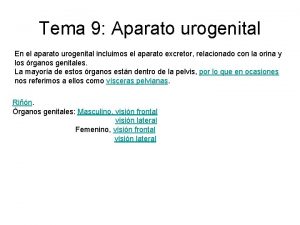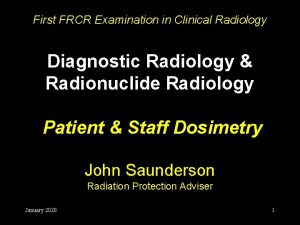Radiology course UROGENITAL Clinical cases Various renal cysts



























































- Slides: 59

Radiology course UROGENITAL Clinical cases

• Various renal cysts morphologies, listed in order by their potential for malignancy, using the Bosniak classification system. This classification help us to decide the management of the patient http: //radiopaedia. org/cases/diagram-bosniak-classification-of-renal-cysts

Renal cyst, Bosniak I simple cyst, imperceptible wall, rounded http: //radiopaedia. org/cases/bosniak-i-renal-cyst

Renal cyst, Bosniak II Minimally complex, a few thin (<1 mm) septa, thin calcifications; nonenhancing high-attenuation (due to to proteinaceous or haemorrhagic fluid) renal lesions of less than 3 cm are also included in this category; these lesions are generally well marginated http: //radiopaedia. org/cases/bosniak-type-ii-haemorrhagic-cyst

Renal cyst, Bosniak IIF • minimally complex, increased number of septa, minimally thickened or enhancing septa or wall, thick calcifications. Hyperdense cyst, no enhancement http: //radiopaedia. org/articles/bosniak-classification-system-of-renal-cystic-masses

Renal cyst, Bosniak III • indeterminate, thick or multiple septations, septal nodularity, hyperdense on CT http: //radiopaedia. org/articles/bosniak-classification-system-of-renal-cysticmasses

Renal cyst, Bosniak IV • clearly malignant, solid mass with a large cystic or a necrotic component http: //radiopaedia. org/cases/bosniak-type-iv-cyst

• This diagram depicts various renal cysts morphologies, listed in order by their potential for malignancy, using the Bosniak classification system. The cysts in the top row (1 and 2) do not need further evaluation or monitoring. The cysts in the bottom row (2 F, 3 and 4) should be followed and require further evaluation and management http: //radiopaedia. org/cases/diagram-bosniak-classification-of-renal-cysts

Acute Onset Flank Pain Case 1 -Acute flank pain - No fever

Case 1 • First study? – X – ray intravenous urography – MRI abdomen and pelvis without and with contrast – MRI abdomen and pelvis without contrast – US kidneys and bladder retroperitoneal with Doppler – CT abdomen and pelvis without contrast – CT abdomen and pelvis without and with – contrast

Acute Onset Flank Pain Case 1

US kidneys and bladder retroperitoneal with Doppler

Acute Onset Flank Pain

https: //acsearch. acr. org/docs/69362/Narrative/

Acute Onset Flank Pain Case 2 -Acute flank pain - No fever - Recurrent symptoms of stone disease

Case 2 • First study? – X – ray intravenous urography – MRI abdomen and pelvis without and with contrast – MRI abdomen and pelvis without contrast – US kidneys and bladder retroperitoneal with Doppler – CT abdomen and pelvis without contrast – CT abdomen and pelvis without and with contrast

Acute Onset Flank Pain Case 2 Patient with right sided renal colic and a history of renal stones https: // radiopaedia. orgcasesbilateral-renal-stones

Case 2 https: // radiopaedia. orgcasesct-ivu-hydronephrosis-due-to-ureteric-stone

https: //acsearch. acr. org/docs/69362/Narrative/

Case 3 - Bilateral flank pain - Mild fever - Burning micturation

Acute Pyelonephritis Case 3 • First study? -X – ray intravenous urography -X – ray abdomen and pelvis - MRI abdomen and pelvis without and with contrast - MRI abdomen and pelvis with/without contrast - US kidneys and bladder retroperitoneal - CT abdomen and pelvis without contrast - CT abdomen and pelvis with and without contrast - Tc-99 m DMSA scan kidney-

Acute Pyelonephritis Case 3 https: // radiopaedia. org/cases/acute-pyelonephritis-1

Acute Pyelonephritis Case 3 https: //radiopaedia. org/cases/acute-pyelonephritis-5

Acute Pyelonephritis Case 3 https: //radiopaedia. orgcasesacute-pyelonephritis-4

Acute Pyelonephritis Case 3 Right sided acute bacterial pyelonephritis Note the absence of a cortical rim sign https: //radiopaedia. org/cases/acute-pyelonephritis-2

Acute Pyelonephritis Case 3 CT portal venous phase At the right renal midpole is a wedge-shaped, hypodensity with associated fat stranding. No hydronephrosis. No free fluid or free gas. Prominent para- aortic lymph nodes. Case Discussion: Acute right-sided pyelonephritis. Urine culture grew E. Coli. https: //radiopaedia. org/cases/acute-bacterial-pyelonephritis

Acute Pyelonephritis Case 3 Axial renal parenchymal phase Alteration of perirenal fat. Signs of right hydroureteronephrosis. Small enlarged para-aortic lymph nodes. Case Discussion: Acute bacterial pyelonephritis https: //radiopaedia. org/cases/acute-pyelonephritis-4

Acute Pyelonephritis Case 4 Presentation: Diabetic patient with left flank pain, fever and hematuria for 3 days duration, not responding to medical treatment. https: //radiopaedia. org/cases/acute-suppurative-pyelonephritis

Acute Pyelonephritis Case 4 Excretory phase demonstrates a streaky linear bands of alternating high and low attenuation. Case Discussion: Acute suppurative pyelonephritis in a diabetic patient. https: //radiopaedia. org/cases/acute-suppurative-pyelonephritis

Acute Pyelonephritis Case 4 https: //radiopaedia. org/cases/acute-pyelonephritis-6

https: //acsearch. acr. org/docs/69489/Narrative/

Hematuria Case 5 -Flank pain - Gross haematuria -Palpable flank mass (classical triad)

Hematuria Case 5 • First study? - X – ray retrograde pyelography - MRI abdomen and pelvis without and with contrast (MR urography) - MRI abdomen and pelvis with/without contrast - US kidneys and bladder retroperitoneal - Arteriography kidney - CT abdomen and pelvis without contrast - CT abdomen and pelvis with and without contrast

Hematuria Case 5 Presentation: Right flank pain and hematuria in urine analysis test http: //radiopaedia. org/cases/renal-cell-carcinoma-37

Hematuria Case 5 http: //radiopaedia. org/cases/renal-cell-carcinoma-37

Hematuria Case 5 • Large mass at upper pole of the right kidney which after contrast injection, heterogeneous enhancement is seen on both parenchymal and excretory phase. • There is no evidence of collecting system or renal artery and vein involvement.

Hematuria Case 5 Discussion: Renal cell carcinoma is classically present with hematuria, flank pain and palpable mass in 10 -15% of patients. CT is usually used to diagnose and stage renal cell carcinomas.

Hematuria Case 5 At the midpole of the left kidney, there is a 6. 4 cm x 5. 8 cm x 7 cm sharply circumscribed mass that demonstrates avid contrast uptake bare in a star-shaped central scarlike lesion. The left renal vein is normal. The right kidney is normal. There is no lymphadenopathy in the upper abdomen. http: //radiopaedia. org/cases/renal-oncocytoma-8

Hematuria Case 5 Conclusion: 7 cm left renal mass - has imaging characteristics suggestive of an oncocytoma but a renal cell carcinoma is considered most likely, especially given the size of the lesion. Renal biopsy under US control could be performed if clinically indicated. Renal oncocytoma is a relatively benign tumour and the importance of this lesion is the difficulty in pre-operatively distinguishing it from renal cell carcinomas.

http: //sacsearch. acr. org/docs/69490/Narrative

Hematuria Case 6 https: //radiopaedia. org/cases/transitional-cell-carcinoma-of-the-renalpelvis-4

Hematuria Case 6 • Contrast enhanced CT scan demonstrates a mass within the right renal pelvis. • The mass distends the renal pelvis (compare to the contralateral kidney) and shows relative high attenuation compared to the urine within the renal pelvis.

Hematuria Case 7 - Haematuria and urinary frequency for 4 months. - Lower abdominal fullness. - - On examination was found to have a lower abdominal mass.

Hematuria Case 7 http: //radiopaedia. org/cases/urinary-bladder-carcinoma-2

Hematuria Case 7 http: //radiopaedia. org/cases/urinary-bladder-carcinoma-2

Hematuria Case 7 There is a large heterogenous mass in the right superolateral aspect of the bladder, causing obstruction of the right kidney. A right duplex system is evident, with hydronephrosis of both moieties. A right ovarian cyst is also evident. Case Discussion: A transitional cell carcimoma of the urinary bladder was confirmed after cystoscopy and biopsy. The right duplex system was in incidental findings in this case. http: //radiopaedia. org/cases/urinary-bladder-carcinoma-2

Case 8 Dysuria, haematuria. Diverticule typically result from chronic outlet obstruction. http: //radiopaedia. org/cases/bladder-diverticulae

Case 8 Dysuria, haematuria. http: //radiopaedia. org/cases/bladder-diverticulum-1

Hematuria Case 9 http: //radiopaedia. org/cases/urinary-bladder-carcinoma-2

Hematuria Case 9 http: //radiopaedia. org/cases/urinary-bladder-carcinoma-2

Hematuria Case 9 http: //radiopaedia. org/cases/urinary-bladder-carcinoma-2

Hematuria Case 9 http: //radiopaedia. org/cases/urinary-bladder-carcinoma-2

http: //sacsearch. acr. org/docs/69490/Narrative

Case 10 Diminished urinary stream retrograde urethrography http: //radiopaedia. org/articles/urethral-injuries

Retrograde Urethrography HOW: - Place a Foley catheter tip in the navicular fossa and gently inflate the balloon with sterile water until a seal is formed making sure not to cause the patient pain or damage the distal urethra - Inject the contrast and image as soon as a major part of the contrast has been injected, taking a spot image when appropriate - Ideal images demonstrate the entire length of the urethra with contrast beginning to fill the bladder http: //radiopaedia. org/articles/urethrography

Retrograde Urethrography INDICATIONS: - pelvic trauma in the emergency department - diminished urinary stream - urethral strictures - urethral diverticula - urethral obstruction - suspected urethral foreign bodies - urethral mucosal tumors - suspected urethral fistula http: //radiopaedia. org/articles/urethrography

Retrograde Urethrography http: //radiopaedia. org/articles/urethrography

Case 11 • • Male 25 years old Admitted for acute urinary retention. Failed urethral catheterisation despite normal meatus • First study?

Case 11 Ascending (retrograde) and descending (antegrade) urethrograms Normal calibre anterior urethra. Huge calibre change at the junction of the bulbous and membranous urethra with a dilated posterior urethra (poststenotic dilatation). http: //radiopaedia. org/cases/urethral-stricture-4
 Ira pré renal renal e pós renal
Ira pré renal renal e pós renal Teoria do nefron intacto
Teoria do nefron intacto Cortical and juxtamedullary nephrons difference
Cortical and juxtamedullary nephrons difference Tapeworm cysts
Tapeworm cysts Ova cysts and parasites
Ova cysts and parasites Sru consensus ovarian cysts
Sru consensus ovarian cysts True cysts
True cysts Hippocampal sulcus remnant cysts
Hippocampal sulcus remnant cysts Criminal cases vs civil cases
Criminal cases vs civil cases Fda clinical investigator training course
Fda clinical investigator training course Asbmt clinical research training course
Asbmt clinical research training course Diagram of a fetal pig heart
Diagram of a fetal pig heart Iliaco osso
Iliaco osso Mezonefroz
Mezonefroz Pudento
Pudento Perineum
Perineum Urogenital system
Urogenital system Ductos mesonéfricos
Ductos mesonéfricos Paramesonephric duct
Paramesonephric duct Urogenital ridge
Urogenital ridge Cloacal membrane
Cloacal membrane Urogenital triangle anatomy
Urogenital triangle anatomy Female urogenital triangle
Female urogenital triangle Fetal pig gender
Fetal pig gender Urethral development
Urethral development Sistema urogenital animal
Sistema urogenital animal Left ureter
Left ureter Mesonephric duct
Mesonephric duct Urogenital ridge
Urogenital ridge Pig male reproductive system
Pig male reproductive system Determinación del sexo
Determinación del sexo Urogenital triangle layers
Urogenital triangle layers Course title and course number
Course title and course number Course interne course externe
Course interne course externe T junction english bond
T junction english bond Medical terminology for x ray
Medical terminology for x ray Silicosis
Silicosis X ray protection
X ray protection Brehmstrahlung
Brehmstrahlung Community college of denver radiology
Community college of denver radiology Radiology timisoara
Radiology timisoara Haudek niche radiology
Haudek niche radiology Venipuncture for radiologic technologists
Venipuncture for radiologic technologists Radiology mergers and acquisitions
Radiology mergers and acquisitions Varicocele grading radiology assistant
Varicocele grading radiology assistant Ellis s shaped curve
Ellis s shaped curve Linear energy transfer
Linear energy transfer El camino radiology
El camino radiology Cherubism radiology
Cherubism radiology Nlp radiology reports
Nlp radiology reports Dose limits radiology
Dose limits radiology Seven parts of the patient history form
Seven parts of the patient history form Statdx elsevier
Statdx elsevier Radiographic film
Radiographic film Chapter 41 intraoral imaging
Chapter 41 intraoral imaging Rhese view x ray
Rhese view x ray Snow storm appearance in sialography
Snow storm appearance in sialography Next generation radiology
Next generation radiology Karisma medical software
Karisma medical software Off center grid
Off center grid



